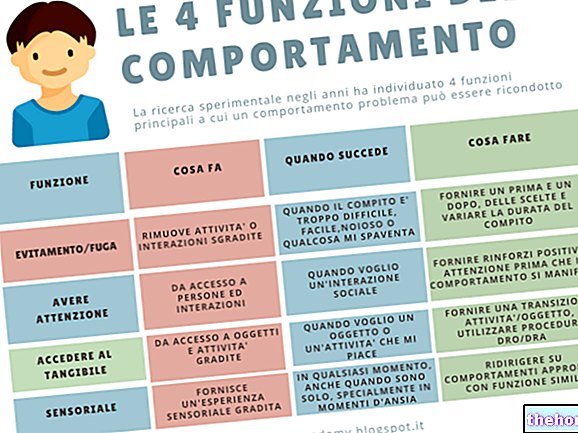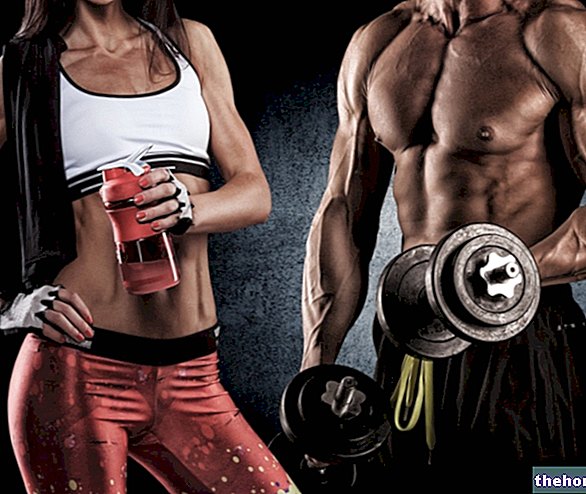How to structure a muscle building program for the various districts, based on the subjective distribution of the various types of fibers.
Edited by Dr. Antonio Parolisi
Getting to the heart of the drafting of the program, putting the case that the subject through the squat of 15 Rmax feels the sensations of muscle burning typical of case n ° 1 (Quadriceps-Glutei-Hamstrings) the program should have an order more or less as follows ;
- 3 sets of Squats of 7-10 reps (15-20 seconds approximately) with 2-3 minutes of recovery
- 2 sets of back lunges with load of 10-16 reps per leg (35-45 seconds) with 1 minute of recovery between one leg and the other
- 2 sets of pelvic lifting with support weight of 12-15 reps (35-45 seconds) with 1.5 minutes of recovery
- 3 sets of leg curl of 20-25 reps (> 60 seconds) with 45 seconds of recovery
In case n ° 2 (Quadriceps-Hamstrings-Glutes) we should have a routine more or less as follows:
- 3 sets of 7-10 reps squats (about 15-20 seconds) with 2-3 minutes of recovery
- 3 sets of semi-bent leg deadlifts of 10-15 reps (30-45 seconds) with 1.5 minutes of recovery
- 2 sets of leg curl of 12-15 reps (35-45 seconds) with 1.5 minutes of recovery
- 2 sets of pelvic lifting or Glutes machine of 20-25 reps (> 60 seconds) with 45 seconds of recovery
In case n ° 3 (Glutei-Quadriceps-Hamstrings) we should have a routine more or less as follows:
- 3 sets of Lunges in progression of 10-12 reps (about 20-25 seconds) with 2-3 minutes of recovery
- 3 sets of squats 10-15 reps (30-45 seconds) with 1.5 minutes of recovery
- 2 sets of 1-leg squats with the other resting on steps of 10-15 reps per leg (about 20-25 seconds) with 1 minute of recovery per leg and 1 minute of recovery between sets
- 3 sets of leg curl of 20-25 reps (> 60 seconds) with 45 seconds of recovery
In case 4 (Glutes-Hamstrings-Quadriceps) we should have a routine more or less as follows:
- 3 sets of Lunges in progression of 10-12 reps (about 20-25 seconds) with 2-3 minutes of recovery
- 3 sets of semi-bent leg deadlifts of 10-15 reps (30-45 seconds) with 1.5 minutes of recovery
- 2 sets of 1-leg squats with the other resting on steps of 10-15 reps per leg (about 20-25 seconds) with 1 minute of recovery per leg and 1 minute of recovery between sets
- 3 sets of lex extension 20-25 reps (> 60 seconds) with 45 seconds of recovery
In case n ° 5 (Hamstrings-Quadriceps-Glutes) we should have a routine more or less as follows:
- 3 sets of semi-bent leg deadlifts 7-10 reps (about 15-20 seconds) with 2-3 minutes of recovery
- 3-4 sets of squats of 10-15 reps (30-45 seconds) with 1.5 minutes of recovery
- 4 sets of Lunges in progression of approximately 30 steps (> 60 seconds) with 45 seconds of recovery
In case 6 (Hamstrings-Glutei-Quadriceps) we should have a routine more or less as follows:
- 3 sets of semi-bent leg deadlifts 7-10 reps (about 15-20 seconds) with 2-3 minutes of recovery
- 3 sets of lunges in progression of 20-25 reps (30-45 seconds) with 1.5 minutes of recovery
- 2 sets of squats of 10-15 reps (30-45 seconds) with 1.5 minutes of recovery
- 3 sets of leg extensions 20-25 reps (> 60 seconds) with 45 seconds of recovery
Always keep in mind that the workouts proposed above are to be considered "indicative", but the thing that should be clear is the sequence of exercises that should always be respected. Obviously if in the case of various problems (...) you had to replace the squat, you could opt for the leg press, provided that it can be done. We remind you that at the leg press the angle of the hip starts from a position of partial closure, therefore it allows a partial excursion of the hip; in reality to say that the press is the "sister" of the squat is not exactly correct, on the contrary ... the stresses in stability are totally different and the machine always requires a path not always suited to the individual biomechanics of the subject. If everything is ok then you can choose the leg press, but absolutely the free squat is to be preferred. moment the idea of the Smith machine, not because it is not a good machine but simply because, again for the joint mechanics, the sensations that are felt are totally different from the free squat; let's keep it for other exercises, if we really need it. However, it should be remembered that choosing an exercise with machines or free weights depends on the stability of the subject and joint freedom, but as a general rule it is always preferable to choose exercises that involve the stabilizing muscles; therefore free weights should take priority.
During the squat test, some individuals may experience lower back pain more than other affected muscles. In this case it is good to make sure, through a consultation with a professional, (Orthopedist, Osteopath, Chiropractor, etc.) to evaluate the structural and postural condition and have the authorization for the practice of "complex" exercises. Resentment is often felt by those with a very long torso, but like all things this is not the fixed rule. The lower back musculature is mainly composed of tonic-postural muscles, therefore designed by mother nature to bear loads for a long time. time (at least body weight alone). They keep us erect. Usually you shouldn't feel a lot of work in your lower back or related muscles, such as the sensation you get in your quadriceps or glutes or hamstrings. and no longer the burning sensation, one should investigate why the back is affected in this exercise. Often the non-flexibility of the pelvic muscles traction the pelvis posteriorly and creates tensions in the lumbo-sacral tract that are amplified with the loads of the squat .
It seems clear, therefore, that to practice important impact exercises such as squats or other multi-joint it is good to investigate before starting a good training program that uses heavy loads.
More articles on "Customizing" Workout for Muscle Fiber Type "
- Muscle fibers and lower limb training
- Personalized training and muscle fibers
- Test to understand the composition of muscle fibers
- Training program and muscle fibers
- Muscle fibers and pectoral, deltoid and triceps training
- Muscle fiber analysis for a more productive workout
- Muscle fibers and training methods
- Muscle fibers and calf training
- Muscle fibers and back training
- Back training based on the amount of muscle fibers
- Muscle fibers and abdominal training




























